U.S. Cities Need a New Vision For Affordable Housing — And Business Can Help


Nearly 50 million Americans have filed for unemployment as governments impose stay-at-home orders to slow the spread of the new coronavirus. While the number of cost-burdened renters reaches near record highs and the supply of low-cost rentals dips to all-time lows, the need for affordable housing is more urgent than ever.
Governments grappling with the housing gap recognize the massive scope of this problem, often leaning on private companies to fund developments and increase the housing supply for low-income earners. Investing $11.6 billion in affordable housing since 2007, few companies have solidified their commitment more than Capital One.
“It’s absolutely critical that we all play a part in it -— private companies, governments, as well as the philanthropic sector,” said Desiree Francis, vice president of originations and community finance at Capital One. “We’re all part of the same community and want to see our neighbors thrive.”
Capital One’s Community Finance team, comprised of investment and banking specialists, partners directly with housing organizations to provide more than $1.6 billion annually to both build new affordable housing developments and enhance existing units and communities. Since the banking giant began investing in affordable housing 13 years ago, it has financed more than 128,000 affordable housing units, creating 145,000 jobs along the way.
Demand for affordable housing “far outstrips supply”
The company has reinforced its commitment to improving access to affordable housing at a critical time. According to the 2019 State of the Nation’s Housing report from Harvard University’s Joint Center for Housing Studies, rental vacancy rates for affordable properties fell to 4.8 percent last year, an indicator that housing options for low-income renters remain thin. Despite the dwindling availability of inexpensive rentals — from 2011 to 2017, the stock for units rented at under $800 shrunk by 17 percent — new construction is failing to address this need. The Survey of Market Absorption reported that under 4 percent of unsubsidized multifamily buildings finished in the first quarter of 2018 rented units for less than $850.
“Demand far outstrips the supply,” Francis told TriplePundit. “Affordable housing developments in general — and [especially] in high-cost markets — tend to be fully occupied.”
Securing a low-cost or subsidized unit, particularly in high-need city markets like New York or Washington, D.C., can feel like winning the lottery, Francis said. But she and her team also recognize that their job isn’t over when residents turn the key to their new homes. Capital One has doubled down on its commitment to serve low-income renters, extending its investments well beyond construction through its Social Purpose program, as seen in places like Miami-Dade County’s Karis Village affordable housing complex.

A holistic approach to affordable housing
Perched just south of the Miami Zoo in South Florida, Karis Village opened its doors to 135 low-income and formerly homeless residents in March 2018, thanks in large part to an $8 million construction loan and $25 million in Low-Income Housing Tax Credits purchased by Capital One. This particular development, aligning with another one of Capital One’s core missions, allots about half of its 88 units to at-risk veterans transitioning out of homelessness.
Instead of walking away following the ribbon-cutting ceremony, Capital One awarded a $250,000 Social Purpose grant to Karis Village. The funds, to be spread out over a 10-year period, will provide residents with essential support services to enrich resident lives in their new homes. These services include addiction recovery programs, transportation assistance and peer-to-peer counseling.
“We look at our role not solely from the bricks of the buildings and properties,” Francis continued, “but by thinking about the residents and how we can make an impact.”
Beyond establishing programs to support the formerly homeless veterans of South Florida, the Social Purpose program has also invested in financial literacy courses and after-school programs at other properties across the U.S. In one instance, it set up a transportation system to take senior residents to their medical appointments and to the grocery store, Francis said.
Capital One is constantly looking to push the frontiers in how governments, businesses, and people address homelessness and the lack of affordable housing, Francis said. Housing policies and investments that approach problems more holistically are bound to be more successful, she continued. Policies and investments looking at the need for affordable living as solely a housing issue could fail to find permanent solutions for at-risk residents facing outside factors.
“When you think about individuals, as well as families, housing is not an isolated thing but part of other factors that families need to think about when deciding how to allocate the money that they have,” Francis told us.
Low-income families strapped with the burden of paying for rent, food, prescriptions, school supplies and other necessities are particularly vulnerable. Seemingly simple services, like those offered through Capital One’s Social Purpose program, can be the difference between living comfortably under their own roof or again facing the threat of homelessness.
This work is far from over
Affordable housing remains one of America’s most evasive problems. Before the coronavirus, the National Low-Income Housing Coalition (NLIHC) estimated that 8 million U.S. renters were severely cost-burdened, meaning they spend more than half of their income on housing, and it expects this figure to rise by around 1.5 million as a result of the pandemic and related job losses.
The need is clear and well documented: An estimated 4.6 million new apartment units will have to pop up in the U.S. by 2030 to meet the booming demand. Francis acknowledges the lofty goals and hurdles that lie ahead for Capital One and its partners but meets the challenges in stride.
“Though the problem may seem insurmountable at times, through advocacy, public-private partnerships, and the testing of new and innovative ideas, I’m proud that we’re delivering positive, equitable community impact,” Francis wrote in Capital One’s 2018 Corporate Social Responsibility Report.
This article series is sponsored by Capital One and produced by the TriplePundit editorial team.
Image credits: PhotoMIX Company/Unsplash and Capital One
The Post-COVID Economy Needs Female Entrepreneurs

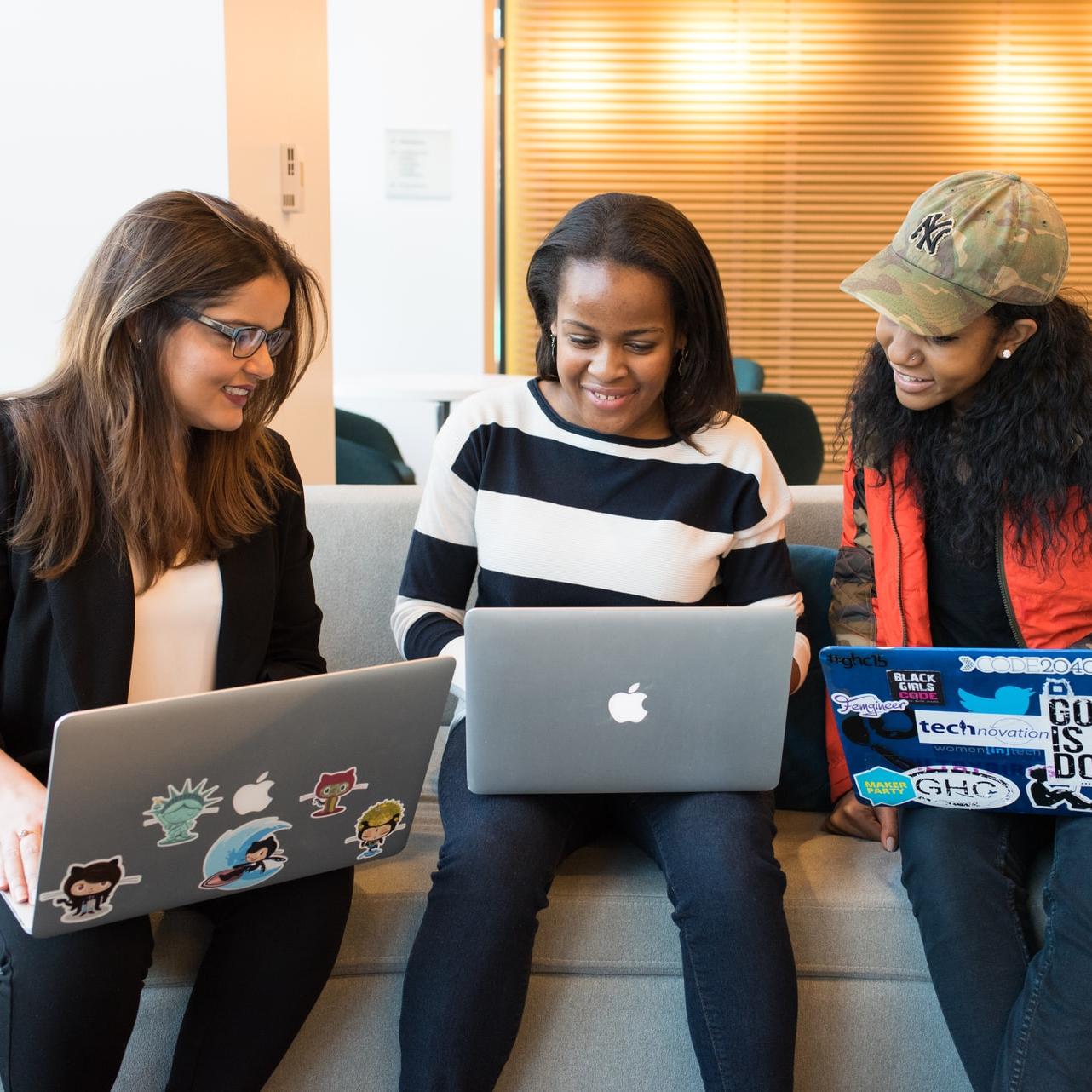
COVID-19 has hit businesses hard and driven the economy into a recession. Unemployment in the United States grew from almost four percent in February to 13 percent in May. While that number subsided by a couple of percentage points last month, bankruptcies have continued. According to Bloomberg, since March at least 114 companies have filed for bankruptcy, citing coronavirus as a factor. The question that looms large is how we can build a strong, resilient post-COVID economy.
Some strategies, like those from McKinsey & Company, recommend prioritizing employee health and skills and bolstering innovation. But we can also look to the 2008 Great Recession to find a way forward. One lesson to learn is the value of female entrepreneurs.
Cornerstone Capital Group, an impact investing advisory firm, came out with a paper this week that details the ways female entrepreneurs uniquely supported U.S. economic recovery after the ’08 recession and how the nation can maximize those benefits today as it looks ahead to a post-COVID economy.
Female entrepreneurship stimulated the economy after the Great Recession
Cornerstone Capital’s report reveals many contradictions in numbers for female entrepreneurs. Women-owned businesses are growing fast — at a rate of 21 percent since 2014. Those owned by women of color are the fastest growing of any entrepreneurial cohort, the report says. But companies started or cofounded by women are finding a dearth of funding: they have received less than half the investment capital of those founded by men.
This lack of investment is not reflective of women’s unsuccessful business practices. Cornerstone reports that female-founded and co-founded companies generate 10 percent more cumulative revenue over a five-year period than their male-founded counterparts.
Additionally, together with firms owned by people of color, women-owned businesses were fundamental to stabilizing the economy after the ’08 recession — adding 1.8 million jobs between 2007 and 2012. Businesses owned by white males lost 800,000 jobs during this period.
This pattern of prosperity existed despite these enterprises being more likely to shutter during the recession.
If companies owned by women and people of color are able to stimulate the economy, investors should take this into consideration, especially in the coming months, as the world emerges from a pandemic.
Investing in women entrepreneurs and investing in a post-COVID economy
In January, before the pandemic hit, the National Women’s Business Council (NWBC) issued policy recommendations to support women-owned businesses.
“Female founders continue to face endemic barriers in accessing capital to start and grow their businesses,” NWBC Chair Liz Sara said in a press release. “Data indicates that female founders received only 2.2 percent or just $2.9 billion of the total $130 billion of 2018 venture capital dollars.”
Some recommendations from the NWBC included creating a federal angel investment tax credit to increase the quantity of potential investors, creating a first employee tax credit and altering Small Business Administration program requirements to allow for more venture capital and equity investments.
Ensuring women-owned businesses thrive is not simply a matter of increasing investment. Changes to federal policies are part of the picture. But we also need to support these businesses from other angles.
“People tend to focus on the funding problem and not on the pipeline problem,” Kathryn Finney, founder of DigitalUndivided, a social startup that helps Black and Latinx women build their businesses, told TriplePundit in 2018. “How are we developing more companies that are positioned well to receive funding? How do we support [women founders of color] who have received funding to raise the amount they truly need to build and scale their companies?”
Of course, as Cornerstone Capital emphasizes, investors have their own part to play, not only for the good of the nation’s economy, but for their own profit. Women-led companies have a track record of strong returns on investment, and the market opportunity is substantial.
If you’re an investor looking into a post-COVID economy, right about now is a good time to look into how women-owned businesses fit into your portfolio.
Image credit: Unsplash
‘Karens’ Are Making Life Hell for Retail Workers, While Companies Look the Other Way
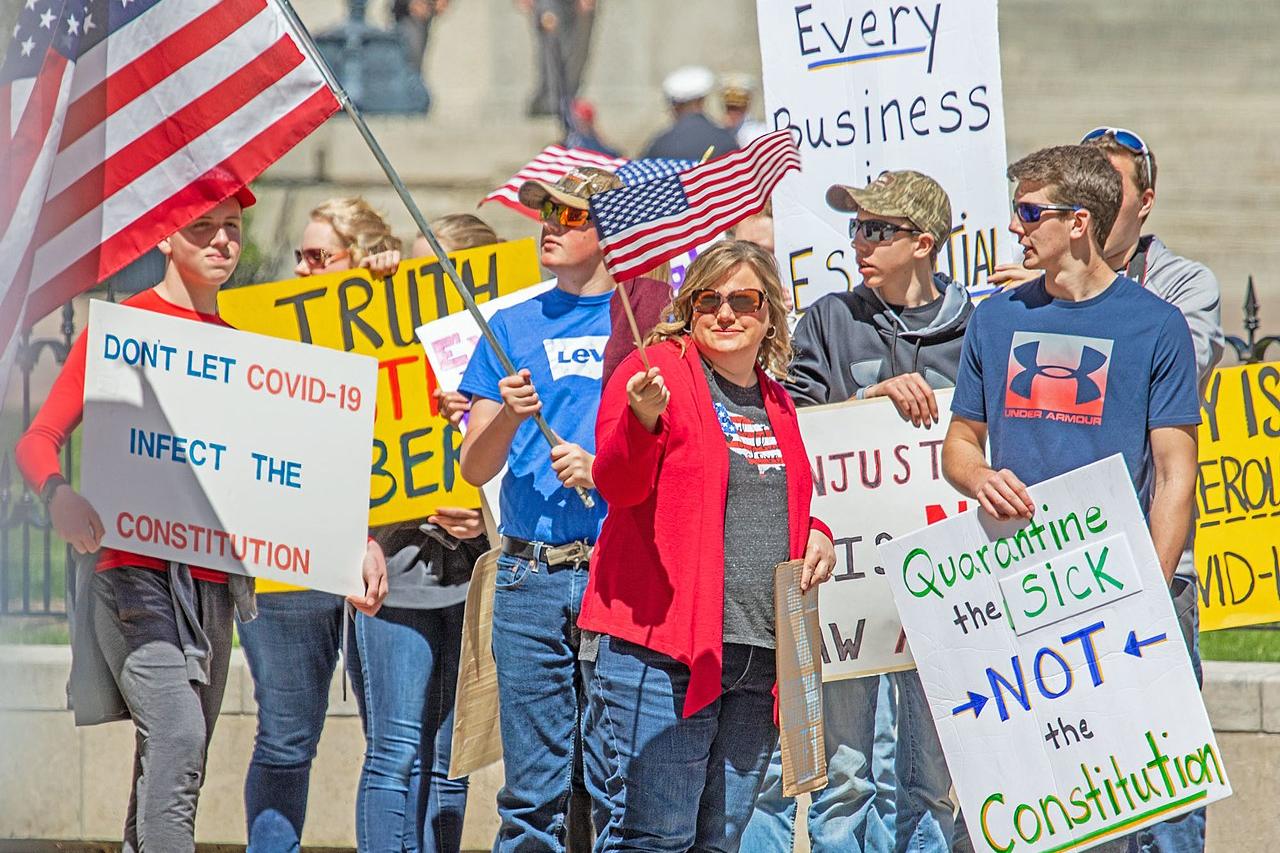

By now you’ve seen the countless videos on Twitter or your local news. “Karens,” who Black Twitter has long used to describe the entitled white woman with her hair in a bob who demands to see the store’s manager, and in recent years have weaponized their race to call 9-1-1 on the smallest transgressions, in recent weeks have summed up what’s gone wrong with America’s response to the novel coronavirus pandemic.
Other Karens have shown up at protests against quarantines, reminding us that the zombie apocalypse is already here and now. At a time when many of us are in lockdown, Karens are a cultural phenomenon that helps us pass the time . . . be it watching their antics, rolling our eyes at the memes and becoming even more exasperated at the state of the world.
There’s more than a few Instagram accounts focused on tantrums these people have thrown, which can make working a shift at a retail story a living hell. (In fairness, there is no shortage of “Kevins” and “Kyles,” too; in India, he’s Suresh.)
To be clear, Karens aren’t the norm. Most consumers act civilly as they load up their grocery carts or pick up a latte, although deep sighs of annoyance can often be heard in store aisles — after all, it’s central to the American spirit to express annoyance when someone from above is telling us what to do.
Karens have retail workers looking over their shoulders
The problem is that the lurking threats of Karens visiting a retail location is on the mind of many retail workers — and the very threats of verbal and even physical assaults are a daily reality. Add that burden to uneven paychecks, a stressful work environment and the ongoing risks of being exposed to COVID-19, and the results can become toxic.
Now, retail workers find themselves deemed collateral damage in the cultural wars over wearing masks in public spaces.
“Mixed messaging and politicization have turned a public health safeguard into a lightning-rod issue,” Washington Post retail reporter Abha Bhattarai wrote last week. “As a result, workers have been berated, even assaulted, by aggressive anti-maskers.”
The emotional toll on retail workers is often not worth the low hourly wages for which they work.
Confused messaging from all directions leaves workers vulnerable
“It’s gotten to the point where my shrinking paycheck isn’t worth it anymore,” one retail employee told TriplePundit on the condition that her name and employer were kept anonymous. “At any given moment, someone will go off on us, and it just makes for a miserable shift. This job I once loved . . . I now hate.”
Confused messaging coming from all levels of government has contributed to this crisis. Public health officials, mayors and county executives will make decisions they believe, based on science and data, are in the best interest of residents. But they can be overruled by a governor, and of course the antics of the White House’s current occupant hasn’t helped matters. When those perched at the highest pinnacles of power won’t wear a mask, it’s no wonder individuals feel as if they can conduct themselves in public however they please. The difference is that the president has no shortage of COVID-19 tests at his disposal to keep him protected. Retail workers making $10 to $12 an hour do not have that security.
And even if there’s a local or statewide ordinance requiring the use of masks, enforcing it is an entirely different matter. At a time when police departments nationwide have come under fire for how they’ve responded to Black people doing things white people know they can do without a second thought, few police chiefs can stomach the thought of having to cite a scofflaw citizen or business.
Retailers have been slow to step up and protect their employees
Many companies, however, are adding to the chaos, leaving workers with the sense they have been thrown under the bus. Some corporations, to their credit, have bucked up as it is clear many employees feel as if Karens have more access to the manager than they do. Starbucks, for example, will start requiring customers entering their stores to wear masks this Wednesday, July 15.
But while the coffee giant had requested such action since it reopened many of its stores in May, some customers bellyached over such an ask — including a woman in San Diego who publicly shamed a barista for asking her to wear a mask. Lenin Guteirrez eventually netted tips worth $100,000 in a crowdfunding campaign after he was hushed by his manager to stop commenting about the incident. Many other baristas, however, who have also had to deal with boorish behavior, haven’t been so fortunate.
Other U.S. retailers have been far slower to act than Starbucks, which at the onset of this pandemic was a model of how to get things done and protect workers. One survey in May revealed that while many companies had boosted their cleaning and sanitizing efforts, the majority were slow to require protective masks and gloves — and the number of companies providing such equipment were few and far between.
In addition, the pandemic bonuses that became the norm in March have largely been rescinded. Starbucks and Kroger are among the companies that rolled back their higher pay rates just as the U.S. continues to set new records for COVID-19 cases day after day.
Add the fact that many of these companies profess to “stand” with the Black Lives Matter movement, only to tell employees masks or items of clothing that express such support are not allowed to be worn during their shifts, often in the name of a “dress code,” it’s no wonder many of their employees dread showing up for work.
Some chains have taken drastic measures, such as L.A's Hugo Tacos, which decided to simply close up up shop rather than allow their employees to suffer constant abuse; a crowdfunding page launched as an employee support fund, thankfully, exceeded its goal.
But for the most part, many retail executives are playing that classic, tired and, in the long run, losing management game: kiss up, and kick down. They’ll take credit for the positive press for publicly supporting employees’ health and alignment with the push to end racism in America, but the overriding message to employees is vastly different. Karens can see the mixed signals when they enter a Trader Joe’s or Costco, and the lack of leadership within America's companies only emboldens them.
As a society, we’re better than this. But corporate America so far has been leading from behind when it comes to protecting everyday workers from feeling vulnerable while they are on the clock.
Image credit: Becker1999/Wiki Commons
BNEF: Mini-Grids Are Crucial for Tackling Climate Change and Boosting Sustainable Development


Climate change is a thorny issue with no easy solutions. Every level of society will feel the impacts. Some, in fact, already do. The communities that are bearing the brunt of climate change are now, for the most part, also those with the fewest resources to address the impacts. In the U.S., communities of color and low-income communities are mostly likely to suffer from climate change the most.
The lower costs of mini-grids could help tackle climate change worldwide
But in developing countries, where institutional, economic and political issues may increase the pressure on low-income communities, especially in the face of climate change, there are solutions that could both address global warming while providing other direct benefits to the people living in those communities.
A new study by BloombergNEF (BNEF) and Sustainable Energy for All (SEforALL), State of Global Mini-Grids Market Report 2020, highlights a technology that has the potential to be a game-changer for rural communities in particular.
A mini-grid is an energy system that is not connected to a centralized grid and produces between 10 kilowatts to 10 megawatts of energy, enough to power a home, a business or even a small community. According to the study, mini-grids could power about 111 million households in sub-Saharan Africa and Asia, about half of those lacking electricity, by 2030.
Due to rapidly decreasing costs of solar power and battery technology, mini-grids have become more affordable in recent years. Last year, a study by the World Bank found that mini-grid capital costs in Africa have declined by more than 50 percent since 2010. Due in large part to lower costs and increased investment, 19,000 mini-grids have been installed in 134 countries, providing electricity for 47 million people.
Mini-grids could boost rural electrification in Uganda
The BNEF and SEforALL report looked at mini-grids in six case studies in Africa and Asia. Uganda, one of the case studies, is an interesting look at how mini-grids could be integrated into communities. Only a quarter of Ugandas have access to reliable electricity, and in rural areas, only 10 percent have access. All of this is further compounded by the effects climate change is having on the country.
Sometimes called the “Pearl of Africa” for its lush landscapes, Uganda is seeing prolonged dry seasons and more intense rainfall and heat. The increased dry and hot periods are taking their toll on people with HIV/AIDS, about 6 percent of the population, who suffer more fevers and coughs, and on women who have endured a spike in domestic violence. Further, droughts threaten Uganda’s most important industry: coffee. One in five Ugandans rely on coffee production for their income, and according to the government, climate change could cut the country’s coffee production in half by 2050, at a loss of $1.2 billion.
Electrification, especially rural electrification, offers many benefits, such as raising household income and increasing access to education opportunities. But in places like Uganda, it could also help lead economic transformation, such as off-season farming and value-added agro-processing. Centralized, utility-scale electricity has long been a challenge in areas of sub-Saharan Africa, and decentralizing electricity is an opportunity to leapfrog those antiquated energy technologies and bring the source directly to the consumers, much like cell phone technology enabled business development in previous decades.
Further, solar power is a clean technology, both in terms of air quality and water. Ninety-four percent of Uganda’s energy consumption is biomass, posing some risks to indoor air quality if burned indoors, which is sometimes the case in rural areas. Diesel generators are common, but they are also toxic: There are about 40 contaminants in the typical exhaust of a generator, not to mention the environmental impacts of diesel.
Mini-grids could use generators as a back-up technology, but a shift to solar could literally be a breath of fresh air, especially as battery storage improves and continues to drop in cost. Solar uses negligible amounts of water — which, when thinking of more traditional ways to electrify rural communities, could enable scarce water during dry seasons to be used for other essential needs.
Investment is crucial for mini-grids to scale up
The biggest obstacle to deploying mini-grid technology to Uganda and other countries is financing. The study found that the 14 funders of the Mini-Grids Funders Group had approved $2.1 billion by March 2020, but only 13 percent of that has been disbursed. Pure commercial financing is also limited because mini-grids by nature lack the scale that a lot of investors seek. Developers’ project track records are so far relatively slim because there are so few examples to draw from. Further, some developing countries lack the appropriate regulation, reforms or political stability to make investors comfortable.
But the benefits are clear. In addition to helping combat climate change with clean energy technology, providing social and economic benefits — including training local people to install and maintain equipment — should be a consideration. Some experts suggest that a combined public-private investment of $100 billion could provide electricity for 500 million people across Africa. Lifting people out of energy poverty and giving them some control over the economies in their own communities can have far-reaching positive effects.
Image credit: Pixabay
Marine Monuments Don't Hurt, But Help, the Fishing Industry, Scientists Say


Image: A humpback whale swimming off the New England coast. Conservationists say the establishment of marine monuments not only protect endangered marine life, but can also benefit the fishing industry in the long run.
Last month, during a roundtable with Maine fishermen, U.S. President Donald Trump signed a proclamation to open the Northeast Canyons and Seamounts Marine National Monument to the fishing industry. Some fishermen claimed that restricting commercial fishing in the monument off the coast of New England endangered their livelihoods.
A key sentence in the proclamation declares:
“Whereas, I find that removing the restrictions on commercial fishing set forth in Proclamation 9496 to allow for well-regulated commercial fishing use is in the public interest and that the objects in the monument can be, and are currently, protected pursuant to carefully tailored regulation and management under existing Federal law:”
That statement would claim that opening the almost 5,000 square miles of Atlantic Ocean to commercial fishing would benefit the fishing industry and, if managed properly, would ensure that the area’s landscapes, fragile ecosystems, and rare and endangered species remain protected.
These claims are, in fact, false, some scientists say: Opening this monument to commercial fishing hurts fishermen — and the effective way to manage the marine monument is to halt commercial fishing.
“Opening a monument to fishing removes everything the monument is supposed to be. It leaves the monument in name,” said Dr. Enric Sala, National Geographic explorer-in-residence and founder of the National Geographic Pristine Seas program, who has helped create marine monuments. Additionally, he noted the presence of a marine reserve benefits fishermen as part of a balanced ecological and economic system.

Incorrect use of the Antiquities Act leads to lawsuit
Northeast Canyons and Seamounts lies about 130 miles off the east coast of the United States. The Barack Obama administration established it in 2016 as the first marine national monument in the country’s Atlantic waters.
Conservationists, including Maine-based marine scientist Zack Klyver and groups like the Natural Resources Defense Council and Center for Biological Diversity, are suing the Trump administration for misusing the 1906 American Antiquities Act. The Act gives the president the ability to establish monuments. Under the Constitution, though, only Congress has the ability to manage federal lands and roll back restrictions.
“A significant change to the monument or its protections — such as allowing commercial fishing — must be done by Congress, not by the president,” Brad Sewell, senior director of oceans for the Natural Resources Defense Council, said in a statement. “The Antiquities Act gives the president power to protect special areas for future generations, not the opposite power, to abolish those protections. Fishing poses a range of threats, such as harm to deep-sea corals from heavy fishing gear, and entanglement of bycatch and marine mammals.”
Correcting the misconception that marine monuments undermine the fishing industry
A conversation with Dr. Sala brought out a few important inaccuracies from the proclamation that require clarifying.
The monument doesn’t hurt fishermen. Dr. Sala emphasized that most fishing happens along the coastline — that includes the work done by Maine fishermen present at the roundtable. Fishing activity within that Atlantic area was modest before the monument designation, Dr. Sala said. The red crab and lobster fisheries that were using those waters were given until 2023 to move out of the area.
Highly protected areas improve fish catch. From larger yields to larger fish to greater diversity, protection benefits fishermen. A study conducted by Dr. Sala and Dr. Sylvaine Giakoumi of the University of Queensland found that fully protected marine areas have, on average, 670 percent greater fish biomass than nearby unprotected areas. Other research has shown that organism size increases by 25 percent and species richness by over 20 percent in marine reserves. These types of improvements have benefited fishermen near Marine National Monuments like the Hawaiian Papahanaumokuakea.
Around 99.9 percent of continental U.S. waters are open to the fishing industry. Only 0.1 percent of U.S. continental ocean waters are highly protected, Dr. Sala said. Research has shown that we need 30 percent of ocean environments to be highly protected by 2030 to improve climate resilience. This isn’t simply a vain exercise in preserving wildlife and beauty and withholding from commercial interests: Safeguarding the strength of these areas is vital for the health of the fishing sector as well.
It takes very little to disrupt fragile ecosystems. Even though minimal fishing was happening before the monument was established, even one net or trap dropping to the depths can do significant damage, Dr. Sala said. These ecosystems support leatherback and loggerhead turtles, 54 species of deep sea corals (some of which are thousands of years old) and canyons that attract the endangered sperm whale.
Fishermen are hurting, but not because of the monument
Of course, the fishermen at the president’s roundtable expressed economic woes and the fear that the monument sets a precedent for closing more of the ocean off to fishing interests.
Dr. Sala yet again emphasized that protecting the ocean is not a threat to fishing jobs. By contrast, the Trump administration has taken actions that do hurt the industry, he insisted. There has been a decrease in demand for seafood, which relates to collapsed supply chains. The trade war with China has led to increased tariffs that hurt the Maine lobster industry, for example.
Even the administration’s climate change policies — including pulling out of the Paris Climate Agreement and lifting environmental regulations for coal power plants — endanger fishing. Maine lobster are already moving north to colder waters.
Marine reserves are part of a healthy fishing sector. In addition to the challenges coming from federal measures, experts say New England waters are currently mismanaged and overfished. The Northeast Canyons and Seamounts Marine National Monument is part of the solution to restoring regional fish stocks and gaining much-needed resilience. A broader, more long-term view is necessary to see how the marine economic system actually works. With this holistic view, it is clear that the fishing sector doesn’t need deregulation — it needs increased marine protection.
Image credit: Todd Cravens/Unsplash
Pandemic, George Floyd Protests and Popular Opinion: How Companies Are Answering the Call to Action
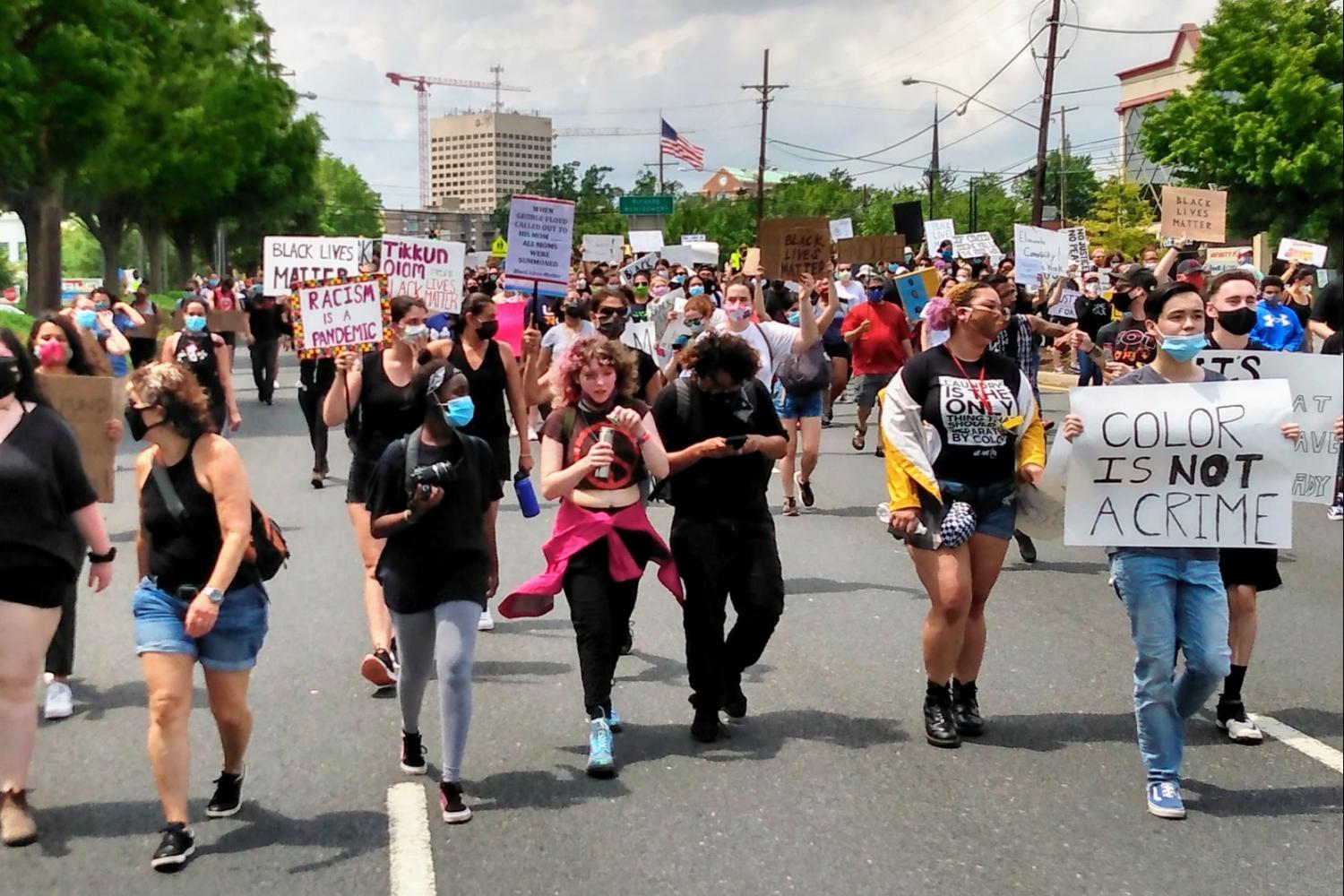
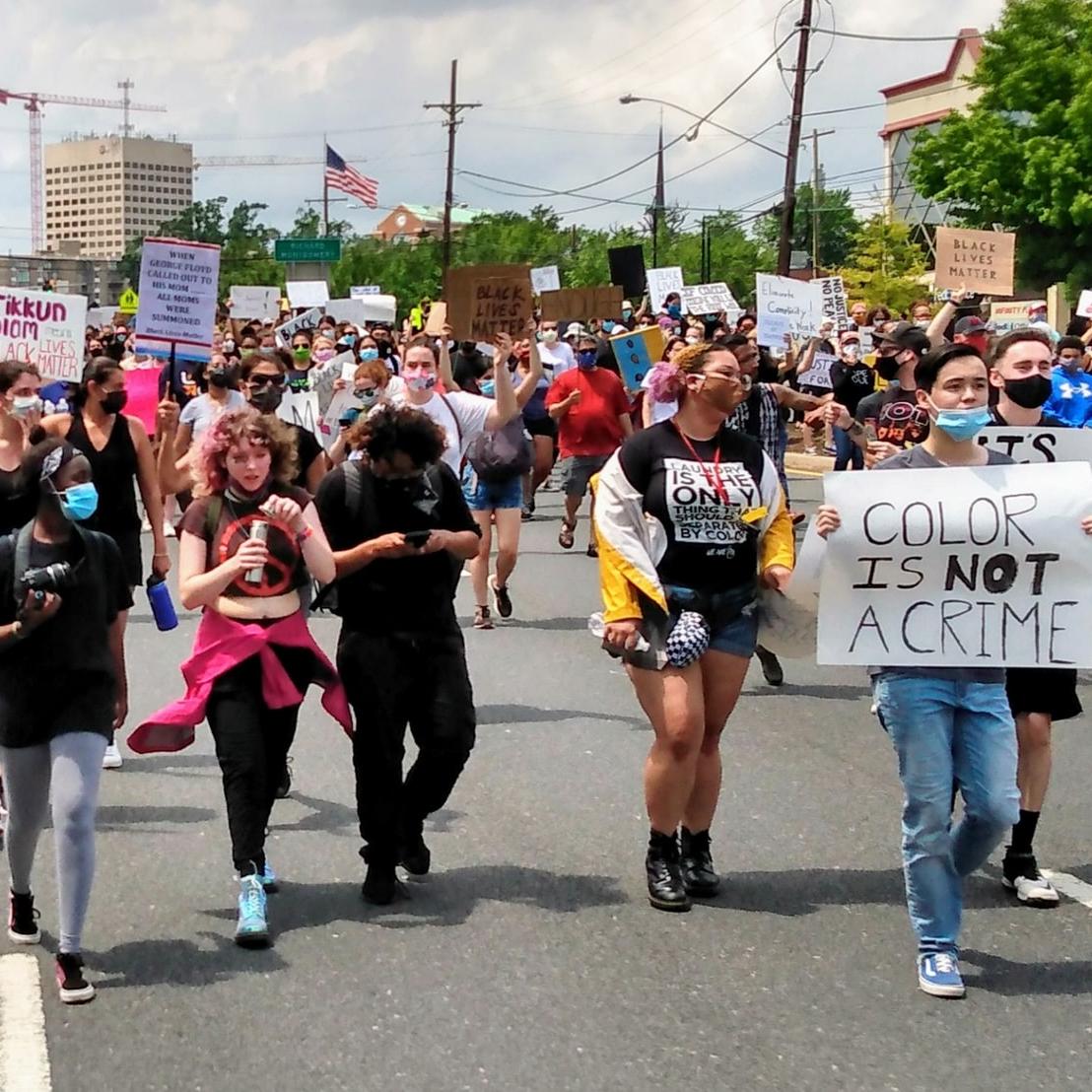
President Trump’s denial and mishandling of the coronavirus pandemic, as well as his support of Confederate generals’ legacies over the lives of Black Americans, has rightfully led many, even past supporters, to question his leadership – questions that have piled up in the several weeks since the George Floyd protests began.
A recent New York Times/Siena College survey showed that trust in President Trump as a source of accurate information about the pandemic stands at only 26 percent. And 70 percent of Americans have more faith in their state leadership than the president when it comes to how and when to reopen, according to an NBC News/Survey Monkey poll.
Citizens are looking for new institutions to trust
With declining trust in many traditional institutions, such as the media and Congress, and the Trump administration’s unwillingness or inability to act on key social and political issues, Americans looked to other parts of society to step up.
The leadership vacuum has been filled not just by local and state government leaders and public health officials, but also increasingly by the business community. From Apple and Google teaming up on contact tracing technology to Salesforce CEO Marc Benioff organizing an effort to procure 50 million pieces of personal protective equipment, many companies are now doing the kind of work that we typically expect from government during a pandemic.
Corporations know that their most important stakeholders — employees, customers and investors — are making decisions about what to buy, what to recommend and where to work based on whether their values align with the companies with which they do business. They are judging whether businesses are good corporate citizens not just based on what they say, or how much money they donate, but on the meaningful actions they take, the authentic changes they make and the demonstrated impact they have. The bar is high, and companies are reaching for it.
The George Floyd protests and the fight against systematic racism
For example, last week, the Business Roundtable, a trade group representing the CEOs of the nation’s largest corporations, launched an advocacy campaign on police reform. The campaign will reach out to Congress, law enforcement and civil rights leaders and run radio and digital ads calling for urgent, bipartisan action to reform police departments in the wake of the murder of George Floyd.
Target, Walmart, Nike and Amazon have made moves to penalize the Washington Redskins, such as pulling merchandise from shelves and online stores, in an effort to pressure the football team to change its derogatory name.
Now more than ever before, businesses are engaging in — and sometimes even leading — social and political conversations and movements that they would have worked hard to steer clear of just a few years ago. Gone are the days of shareholder supremacy. The business community has found a new voice, and it’s using it not just to benefit shareholders, but to support employees, customers and communities at large.
Employees have become activists
Staying on top of the ever-shifting public dialogue can be daunting for any company. But organizations don’t need to look far for help. For all companies, employees are among their most important stakeholders and a group that is fundamental to their operations and bottom line. More recently, employees have helped bring important issues to the attention of corporate executives, helping them get ahead of societal challenges that could become risks for companies if left unaddressed. Recent employee activism at Facebook and Amazon shows the two paths companies can take when their workers raise their voices.
In September 2019, Amazon employees began pushing their company to take more direct action on climate change — and to press the issue, they staged walkouts, organized into activist groups at work and wrote open letters to executives. In response, Amazon made a commitment to go net-zero carbon by 2040 (a central demand of employees) and began rolling out very public climate initiatives. The message to employees was clear: We hear you; we recognize this is an issue, and we are acting.
Conversely, when encountering its own instance of employee activism, Facebook took a very different approach. When employees began speaking out against the company’s inaction toward hate speech on its platform, they were largely ignored. When employees staged virtual walkouts or public resignations, the company held a town hall during which CEO Mark Zuckerberg defended the continuation of Facebook’s policies. The concern over those policies quickly spread beyond Facebook’s employee base to the company’s advertisers, who joined a boycott of the social networking site that has now grown to 750 organizations and counting, including Coca-Cola, Hershey, Walgreens, Best Buy, Ford and Adidas.
Two starkly different lessons on employee engagement
The lesson is not that companies must change a policy every time employees raise an issue. Rather, as social, environmental and racial justice become higher priorities among consumers, and as they demand that companies demonstrate alignment with certain values, employee concerns can help a company get ahead of societal pressures.
By engaging employees, offering them avenues to have their voices heard, and proactively trying to understand what issues are of greatest importance to them, companies can align their purpose to appropriate action. Amazon took that approach and is currently basking in the media limelight of another pro-climate initiative.
Facebook, however, dismissed employee concerns, even in the wake of the George Floyd protests, and is now navigating one of the biggest crises in its history.
Image credit: Kevin James Shay/Unsplash
Brands Put Pressure On Congress to End Qualified Immunity
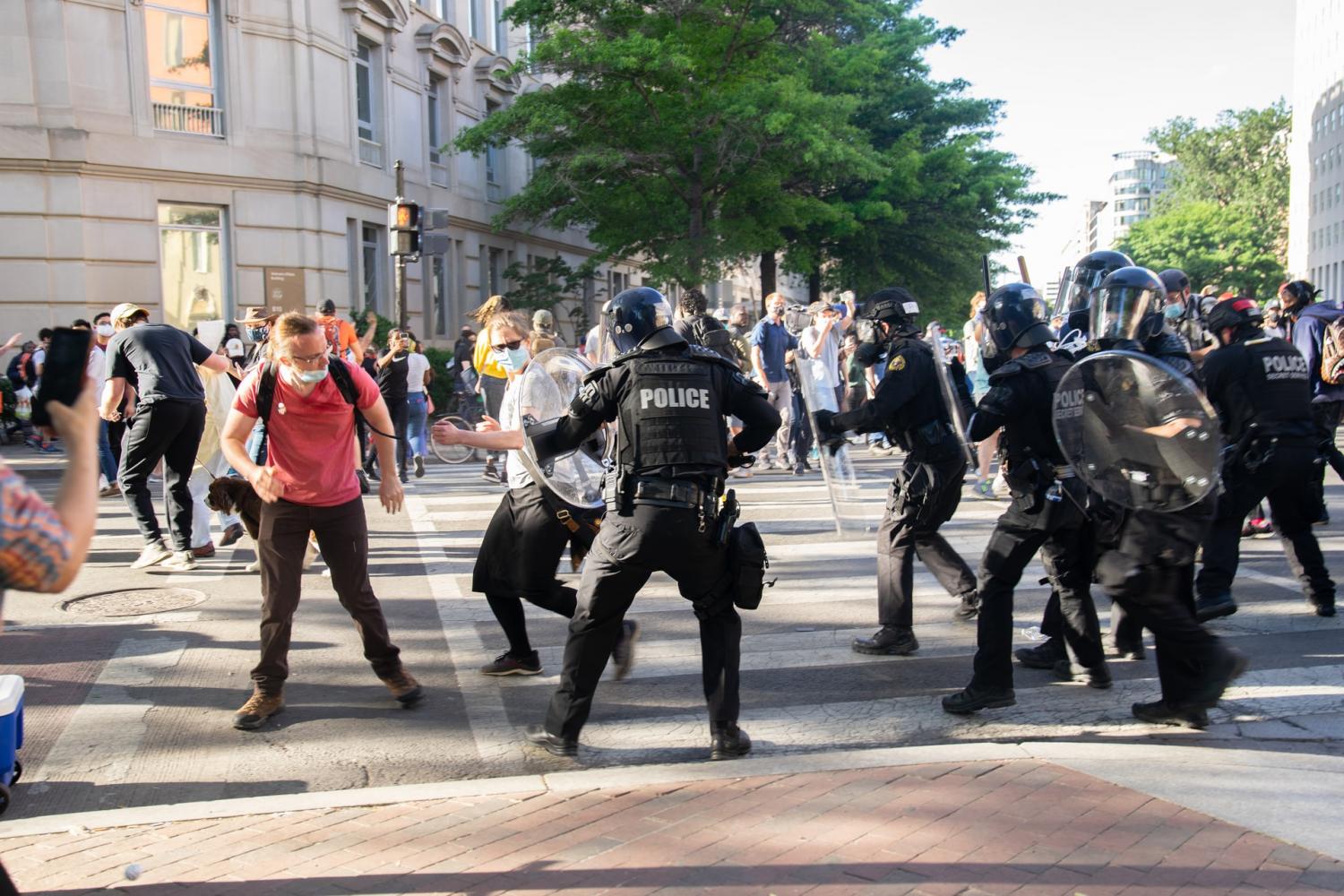

As the U.S. still faces a reckoning with centuries of systematic racism, it’s become clear to more companies that saying they “stand" with Black communities is not enough. The time has finally come to take on institutions that are preventing Black people and people of color from participating freely in American daily life without having to look over their shoulders. To that end, a group of more than 400 business leaders sent a letter to the U.S. Congress this week calling for the end of qualified immunity.
Qualified immunity, legal precedent and systematic racism
First conceptualized in 1967 and again defined in a 2009 U.S. Supreme Court decision, qualified immunity “…balances two important interests — the need to hold public officials accountable when they exercise power irresponsibly and the need to shield officials from harassment, distraction, and liability when they perform their duties reasonably.”
When it comes to litigation that involve accusations of excessive police force, plaintiffs have the burden to prove that any government official was in violation of “clearly established” law in order for them to receive any damages for harm. The problem is that a plaintiff only has a chance at winning a criminal case against a police officer if a prior court case found a similar official liable in a nearly identical situation, which in reality is often almost impossible.
In addition, one section of the federal government’s civil right statute says police officers can’t be held liable if they believed their conduct was legal, even if it turns out their actions were in fact in violation of the law.
The results, say critics of qualified immunity, are the constant stories we see in the news, dating farther back than the Rodney King trial in the early 1990s and extending to court cases involving the murders of Black people such as Eric Garner and Philando Castile.
Brands are sending a message to Washington, D.C.
As many Americans have sighed in frustration when watching news coverage of the demonstrations sparked by the murder of George Floyd, and excessive force in response to protests on the behalf of police from Buffalo, New York, to Los Angeles, businesses are now saying, "Enough is enough."
Brands that have signed on the letter to Congress include Ben & Jerry’s, Eileen Fisher and Seventh Generation. With the backing of the American Sustainable Business Council (ASBC), they are supporting the bipartisan Ending Qualified Immunity Act sponsored by Democratic Rep. Ayanna Pressley of Massachusetts and independent (and former Republican) Rep. Justin Amash.
“When police officers kill an unarmed man, when they beat a woman, or when they shoot a child, the people of this country must have a way to hold them accountable in a court of law,” write the letter’s signatories. “And officers must know that if they act in such a manner, there will be repercussions.”
Calling for an end to get-out-of-jail-free cards
The co-founder of Ben & Jerry’s was even more direct in his assessment of qualified immunity.
“Qualified immunity is a get out of jail free card that protects police officers from being held accountable,” Ben Cohen said in an emailed statement to TriplePundit. “It makes it so difficult to prosecute and convict a bad cop that legal experts describe the law as so favoring cops that its ‘heads I win, tails you lose.’”
The ASBC and Ben & Jerry’s co-founders say they are encouraging more business leaders to pen their names on this letter in the quest to pressure elected officials to put a stop to qualified immunity and cease what they say is the “state-sanctioned murder of Black people.”
Opponents of qualified immunity face an uphill fight. While some political leaders, including Colorado Gov. Jared Polis, have signed legislation ending qualified immunity and other tactics that critics say have led to police brutality, many members within the Republican caucus in the U.S. Senate don’t appear to be close to jumping on that bandwagon any time soon.
Image credit: Ryan Kosmides
U.S. Coalition Pushes for a Surge of Electric Vehicles Beyond California
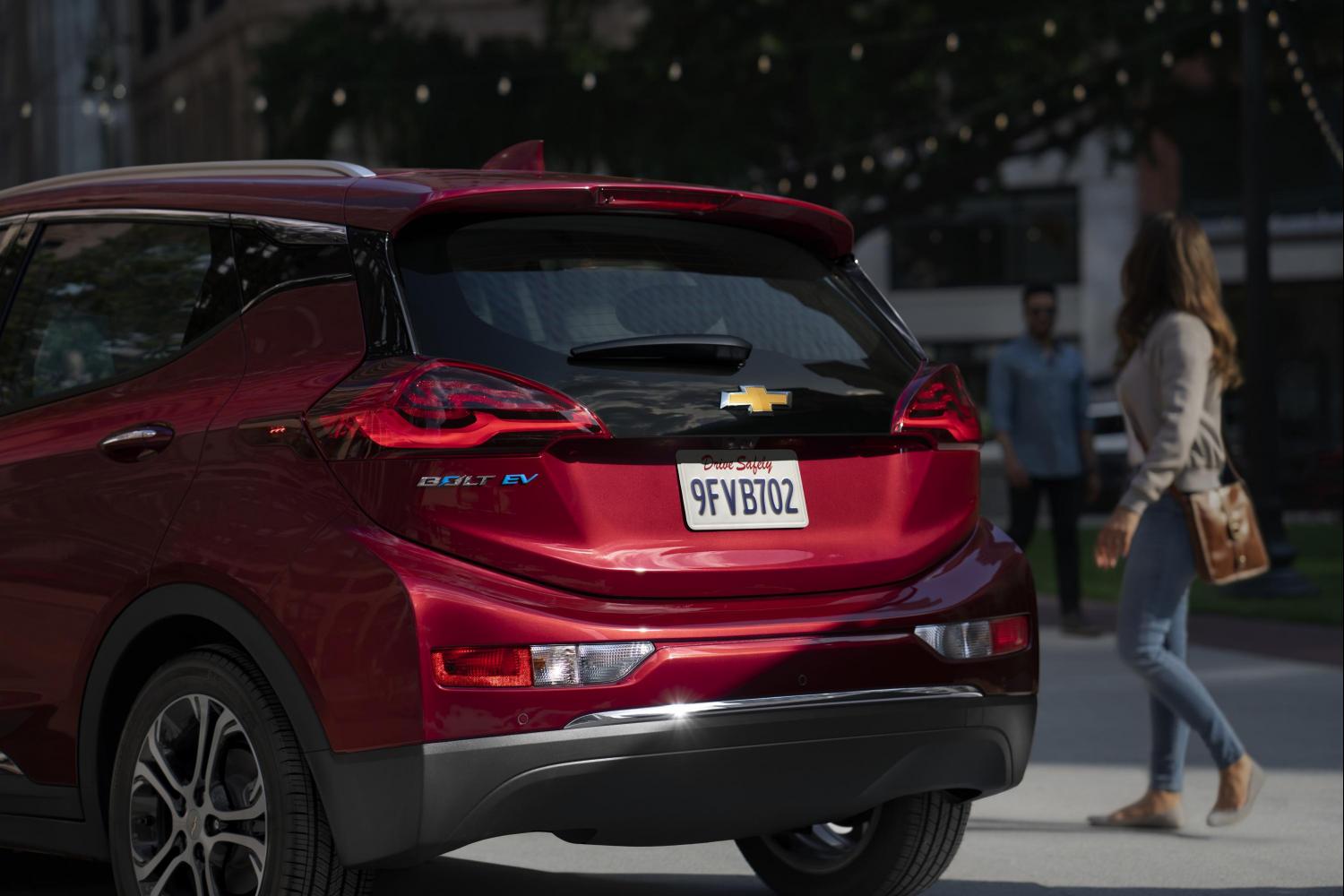
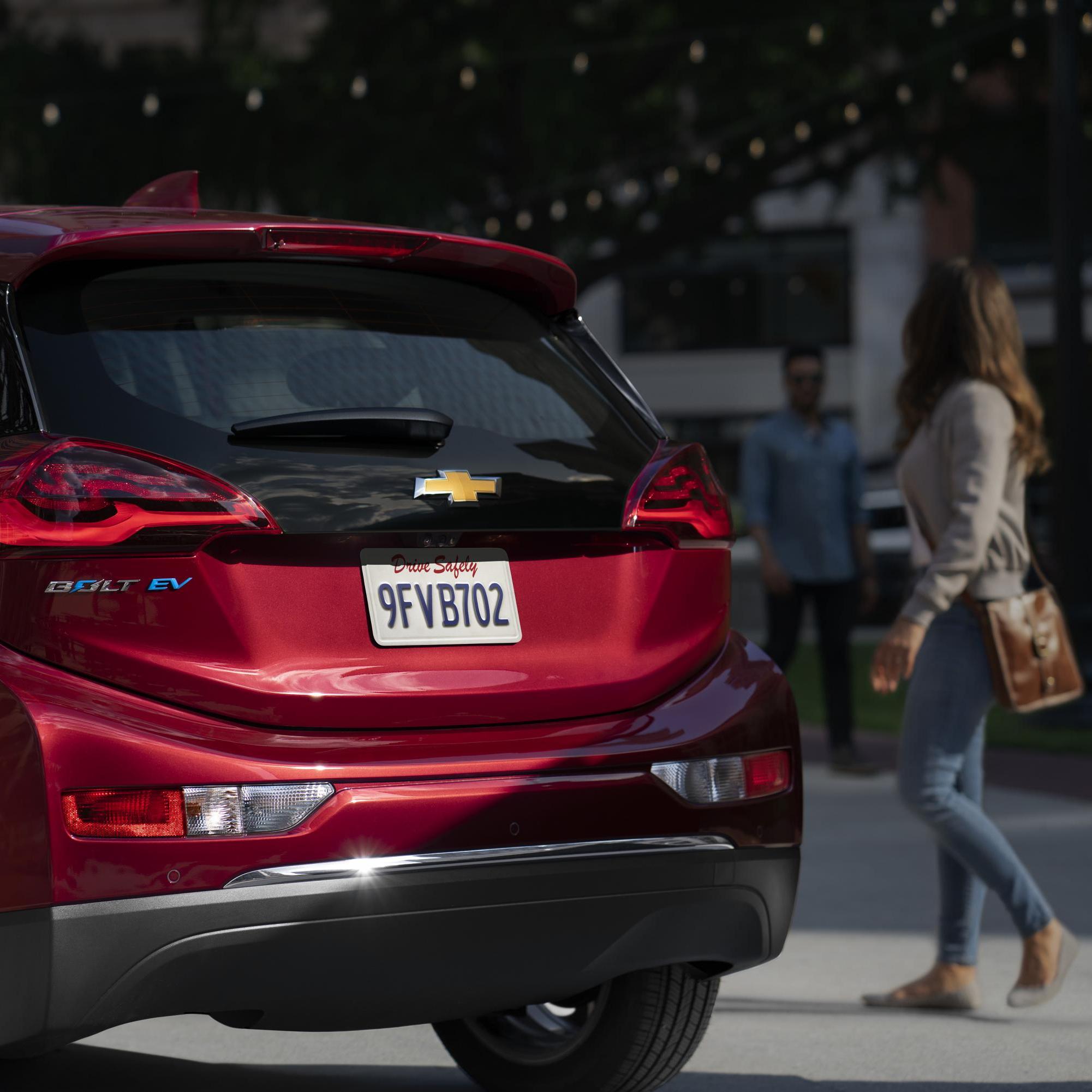
A coalition called the Corporate Electric Vehicle Alliance (CEVA) launched under the auspices of the green investor organization Ceres this year, with the stated aim of accelerating the electrification of fleet vehicles across the U.S. The move is significant because it demonstrates that corporate demand for electric vehicles can still move the market on a national basis, despite conflicting policy signals from the federal government.
A 50-state drive for electric vehicles
Federal policymakers have been pushing back on the electric vehicles trend on two different fronts. One is the Department of Justice, which is challenging California’s longstanding leadership role in regulating auto emissions. The other is the U.S. Environmental Protection Agency, which has proposed dialing down fuel efficiency and pollution standards.
The new CEVA coalition appears designed to work around these policy changes by appealing directly to fleet buyers, starting with its own members.
Among fleeting-buying members of CEVA is Amazon, which has been coming under increased pressure from its own employees to take a more aggressive stand on climate action. Its affiliation with CEVA may indicate a more proactive stance on climate action in the coming years.
Other corporate fleet owners in the coalition have also become familiar names in the clean energy field and are now extending that interest to the transportation sector, including AT&T, Clif Bar, Ikea North America and DHL.
As electric utilities have a direct bottom-line interest in encouraging electric vehicle sales, CEVA also lists energy and technology stakeholders among its founding members, including Consumers Energy, Direct Energy, Genetech, LeasePlan, Lime and Siemens.
The number of fleet owners involved in the collaboration is relatively small so far, but together they account for a substantial number of vehicles. Together, they could help accelerate fleet electrification across the private sector by fostering economies of scale that lower costs for all buyers, including small- and medium-sized businesses.
From electric vehicle fleets to individual car buyers
The impact of fleet electrification will all but inevitably ripple out to the market for personal cars.
According to Ceres, in the U.S. more than half of vehicles on the road today are under the business umbrella. The question is whether or not businesses can be motivated to invest in electric vehicles.
On that topic, Ceres considers the science settled. The group makes a firm bottom-line case for electric vehicles, citing lower fuel and maintenance costs, security from unpredictable fuel price spikes, and improved driver safety.
In addition, Ceres notes that electric vehicles can exercise a strong impact on the bottom line indirectly by enhancing brand reputation and aiding in employee recruitment and retention.
Mixed signals on electric vehicles
CEVA is organized with two overlapping goals in mind. One is to motivate auto manufacturers to accelerate their investment in electric vehicles. The other is to work with state and federal policymakers in support of electric vehicle manufacturing.
Though the federal area is in flux, the attention to state-based policy already shows clear signs of a substantial payoff.
Just days after CEVA launched, General Motors announced a new $2.2 billion investment in electric vehicle manufacturing in Michigan, with an additional $800 million related to supply chain enhancements.
In a January press release, GM President Mark Reuss credited Michigan policymakers with shepherding the new initiative. “The support from the state of Michigan was a key element in making this investment possible,” he said, adding that “this investment helps ensure that Michigan will remain at the epicenter of the global automotive industry as we continue our journey to an electrified future.”
The move follows earlier GM investments in electrification in recent months, including a new energy storage laboratory and a new EV battery plant in partnership with the company LG Chem.
Selective hearing on electric vehicle signals
The new GM announcement also indicates that auto manufacturers may be paying more attention to policy signals coming from the U.S. Department of Energy than other branches of the administration.
While the U.S. Environmental Protection Agency has been aggressively rolling back a long list of pollution standards, the Energy Department has continued to pursue clean technology at a rapid pace during the current administration.
The GM announcement follows a series of major new funding initiatives launched by the Energy Department in January, aimed at improving EV batteries, increasing the efficiency of electric drive trains, pushing down costs, extending the EV charging network, and integrating more electrification options into the transit sector.
Also of interest is a new round of funding for the department’s H2@Scale initiative for hydrogen fuel. Though natural gas is currently the main source of hydrogen, the Energy Department has been pivoting to a focus on scaling up the production of renewable hydrogen for fuel cell EVs among other uses. That includes hydrogen fuel cell forklifts as well as trucks and delivery vans, an area of focus for Amazon among other CEVA members.
It looks like CEVA is off to a quick start. Regardless of whether or not California is able to maintain its leaderships role, all indications are that the electric vehicle market is poised for rapid acceleration.
Image credits: Chevrolet Pressroom
Taking on Food Insecurity Isn’t Greek to Chobani


As it’s become more obvious that the U.S. is far from emerging from the first wave of the novel coronavirus pandemic, the rollback of phased re-openings across the country threatens to push more people into unemployment and catalyze a rise in food insecurity.
To that end, the pressure is on for companies within the food and agriculture sector to mobilize as best they can in order to take on food insecurity. One company answering that call is Chobani, the upstate New York-based brand that has helped make Greek yogurt a mainstay in many refrigerators.
This week, Chobani announced that it has launched a new flavor, the profits of which the company will donate to Feeding America's network of food banks. From now through September, a strawberry flavored yogurt with a touch of peanut butter will help fight hunger across the U.S.
Chobani’s partnership with Feeding America builds upon the donation of 6.5 million food products to U.S. food banks, homeless shelters and hospital workers, according to the company.
The announcement comes as Feeding America recently estimated that the widespread loss of jobs across the U.S. could lead to an additional 17 million Americans facing the threat of hunger by the end of this year. The number of children facing food insecurity could spike from just over 11 million to 18 million in 2020 as well, according to the nonprofit's estimates. More than 40 percent of mothers raising children under the age of 13 who responded to a recent survey said they are confronting food insecurity, a level at its highest since 2001.
Food banks have a long track record of success as a stopgap measure for Americans who face any threat of food insecurity. But during 2020, the perfect storm of a public health crisis, a breakdown in the food supply chain and economic chaos have together caused food banks to become overwhelmed by people who have suddenly found themselves in dire need.
“Food banks are on the ground addressing the increased need for food assistance in their communities. We are grateful for Chobani’s commitment to fighting hunger during this unprecedented time. Their generous support helps to provide more meals to children and families in need,” said Casey Marsh, chief development officer at Feeding America.
Chobani has long displayed its activist chops. Founder Hamdi Ulukaya, himself an immigrant, and the company have long gone against the grain in corporate America. Ulukaya opened his business in a shuttered Kraft plant within a region that has long faced economic decline. In recent years, the company has been outspoken as to why it hires refugees while paying its workers a living wage. Last week, Chobani joined the ranks of companies that said it would stop buying paid advertising campaigns on Facebook and other social media channels.
Sign up for the weekly Brands Taking Stands newsletter, which arrives in your inbox every Wednesday.
Image credit: Chobani/Facebook
Why Single-Use Plastics Get in the Way of Climate Justice
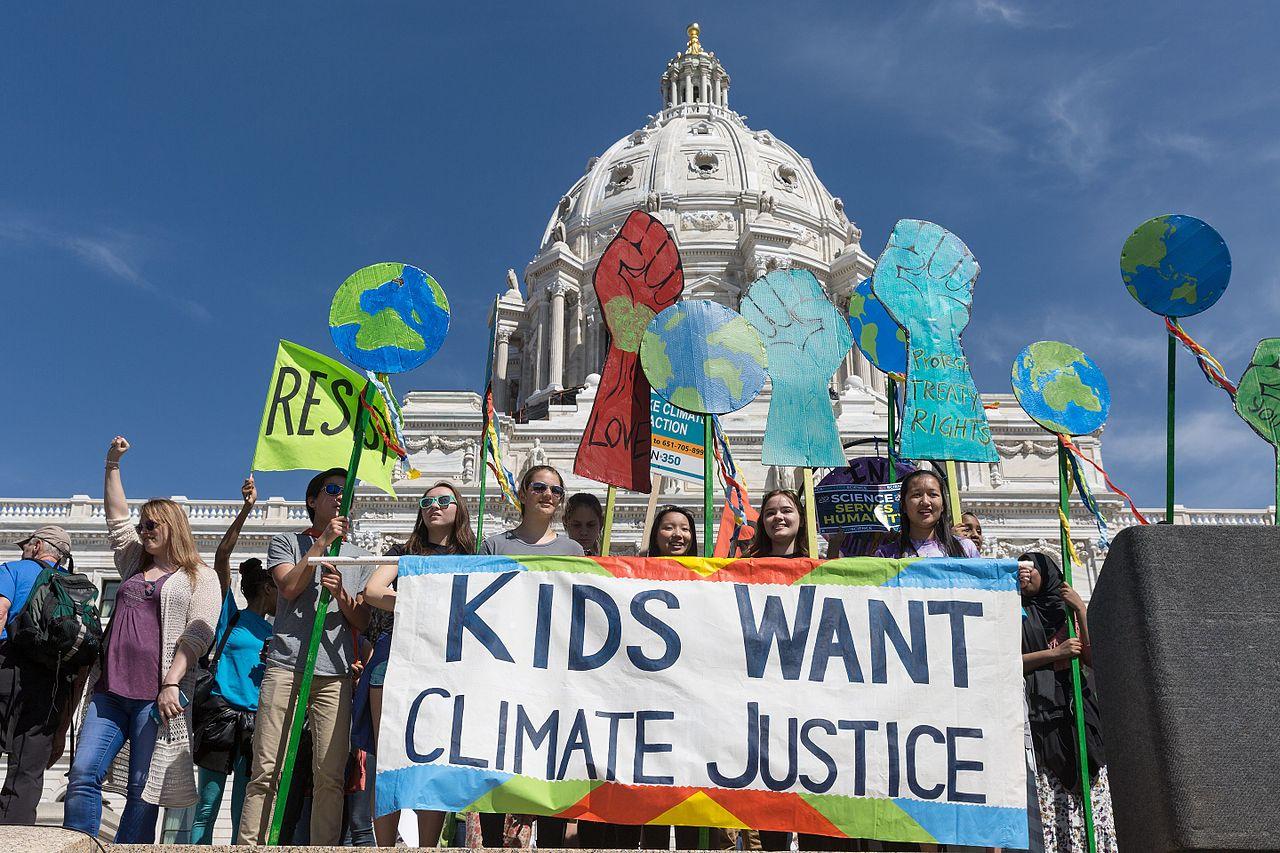
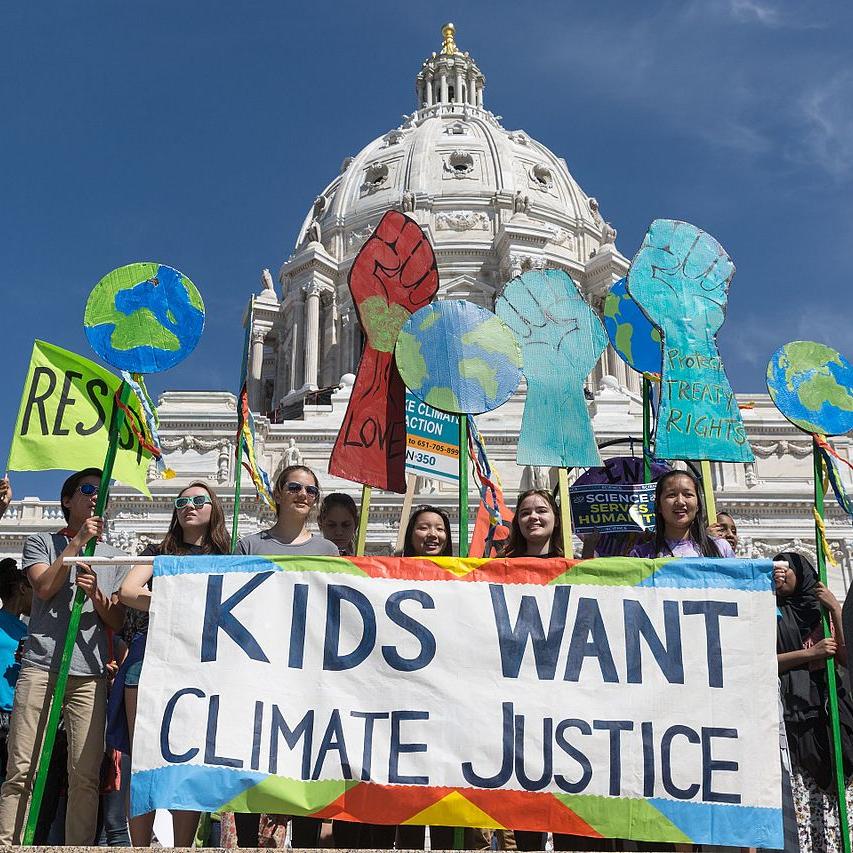
(Photo: A 2017 climate justice rally in St. Paul, Minnesota.)
It wasn’t long ago when just about every company was talking up their contributions to the circular economy, a system in which materials are perpetually recycled and nothing becomes waste. Some chatter is still ongoing: Last month, 50 global leaders signed a letter pledging to “build back better” with the circular economy as the foundation of post-pandemic sustainable development. The circular economy’s success, however, can’t occur without taking on climate justice.
Many companies that previously touted their commitment to end the consumption of single-use plastics in a shift toward circularity are now silent. And in a step backward for climate justice, fears over the spread of the novel coronavirus have led to a surge in the consumption of single-use plastics worldwide.
Environmental groups have long pointed fingers at what they say is the culprit: plastics manufacturers. “The plastic industry likes to gaslight the public by trying to convince people that this is a problem created and solved by individual consumers,” Sarah Lakeman, project director for the Natural Resources Council of Maine, wrote last week.
The challenge here is that the problems, as well as the solutions, involved with taking on plastic waste often leave the greatest impacts on communities of color.
The Surfrider Foundation is one organization that has outlaid it all: From production to consumption and, finally, to disposal, the trail of single-use plastics leaves its largest footprint on these communities, whether they are here in the U.S. or abroad.
Single-use plastics have to be disposed somewhere, or else they are incinerated. And even if plastic containers end up in a recycling stream, they have to be sorted, cleaned and churned into renewed materials. The sites at which landfill, incineration and recycling processes occur are frequently located in or near communities of color. Those neighborhoods generally have little political clout and few resources to push back against the waste facilities that can end up in their backyards.
While the waste management industry and plastics sector largely contribute to what critics say is environmental racism, the nonprofits that fight these industries, along with their well-heeled allies, also have roles that end up exacerbating this ongoing crisis.
“I saw whole neighborhoods of wealthy ‘progressive’ white New Yorkers — vocally dedicated to recycling and ‘saving the planet’ — spend their seemingly limitless money and time to prevent their own responsibility for managing waste to ameliorate the historic targeting of waste facilities in communities of color," Mathy Stanislaus wrote in The Hill earlier this week.
Stanislaus added that incinerators, one go-to solution in an era when landfill space is running out, exemplify how the waste management industry’s supply chain operates on the backs of people of color: “The decisions to burn trash in minority neighborhoods did not happen in a vacuum; they were built on top of the systemic racism of land use and chosen because the residents have a limited capacity to fight back.”
The numbers don’t lie when it comes to systematic racism in the waste industry: Last year, one report found that almost 80 percent of the incinerators in the U.S. are in low-income communities or communities of color. In the end, that reality is why as California moved closer to its version of a statewide plastic bag ban in 2016, one survey that year showed as much as 86 percent of respondents from communities of color were in support of such a law.
But from the onset of the coronavirus crisis, there has been a well-coordinated campaign to raise fears about the safety of reusable shopping bags while promoting the alleged safety of single-use plastic bags and other disposable containers. And with energy companies viewing plastics as central to their long-term strategies in an era when renewables have become far more cost-effective and scalable, progress on climate justice could stall, or even be reversed, over the next several years if the resurgence in single-use continues.
In the end, plastic bag bans are only one small part of ending environmental racism in America, but rolling back these policies will hamper climate justice efforts and unleash even more toxins across the country’s poorest communities.
Sign up for the weekly Brands Taking Stands newsletter, which arrives in your inbox every Wednesday.
Image credit: Lorie Shaull/Wiki Commons and Brian Yurasits/Unsplash